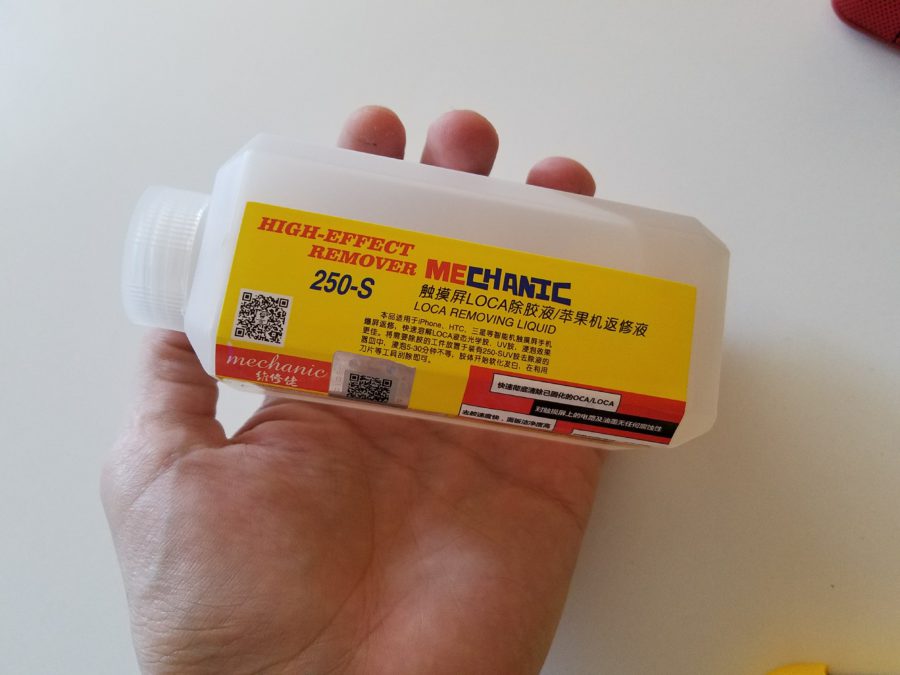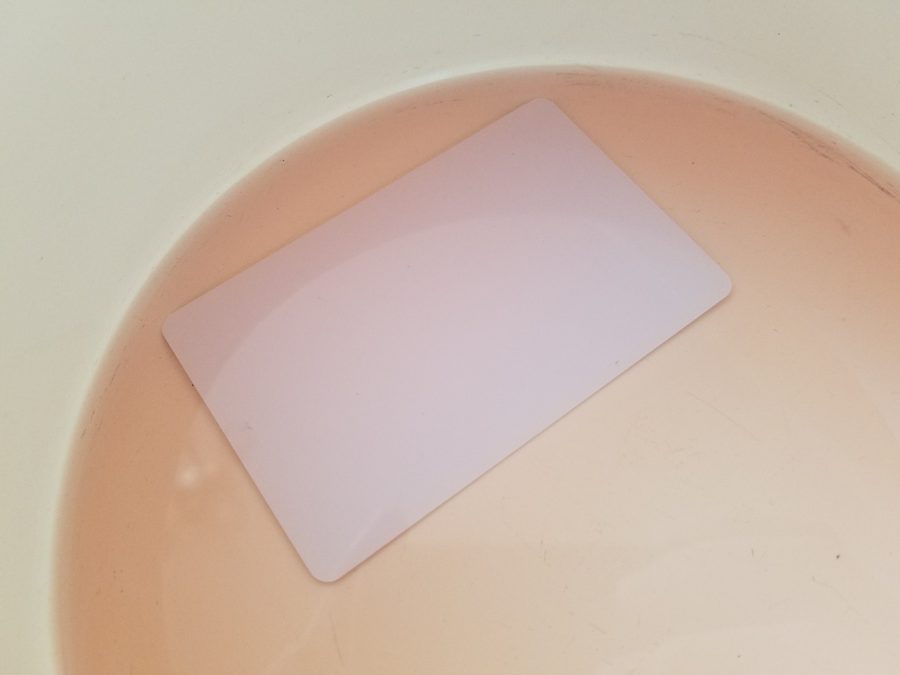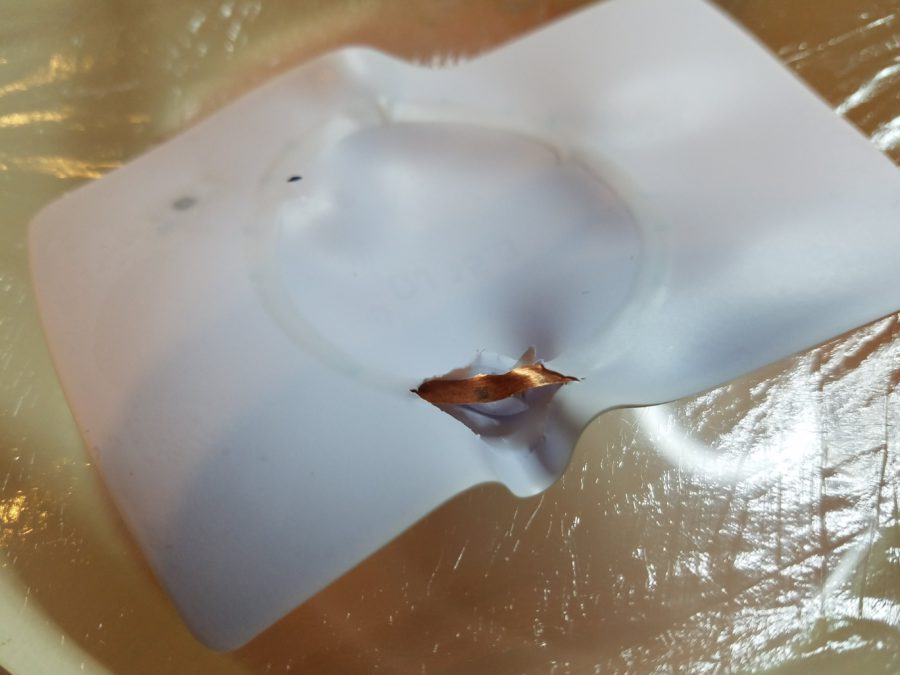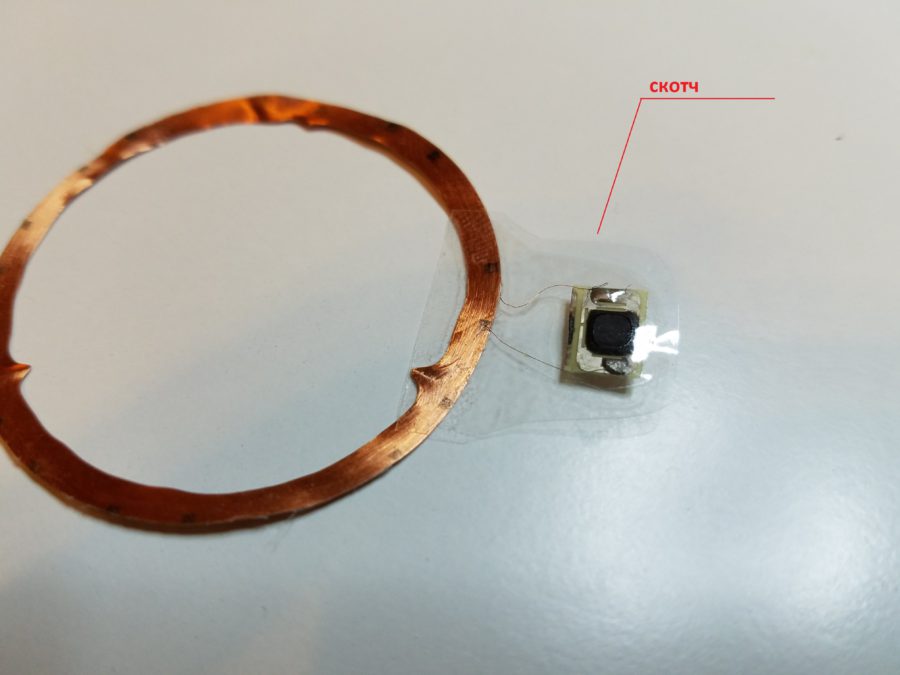I am gradually getting used to the idea that soon the whole life of a person will be concentrated on the phone. Not in the sense that we will constantly walk, bury ourselves in the screens of mobile phones, but in the fact that the phone will become an identity card, and a wallet, and an identifier, and a pension certificate, and rights, etc. In fact, despite the obvious risks, I would be very happy about this, as it would save a lot of time.
But despite the fact that this is far from it, today everyone can take a small step in this direction.
On the Internet, you can find many instructions on how to free the metro card from the outer shell, and then make a ring out of it, for example, with which it will be possible to pass the turnstile in the metro. The topic of rings is not close to me, and in my city there is no metro, however, I was not spared the need to often use a contactless card – a pass to work.

Every time you come to work, you need to get a pass in order to scan it in the turnstile at the entrance. Considering that my favorite wallet is protected from scanning (which the wallet manufacturer even warns about with a special sign), attaching the wallet to the reader will not work.

It is inconvenient to get a pass from your wallet every time you pass the turnstile, so you have to keep the cherished card in your pockets, which means you have a chance to forget it when changing clothes.
But I always have my phone with me. A way out is found – you need to integrate the pass into the phone. Alas, this cannot be done programmatically – the chip on the pass is protected from copying, and it will not work to transfer it to the phone. So, we will follow the path of modernizers of metro passes.
To begin with, you need to understand that a coil with a microchip is sealed inside the card, on which the identifier read by the receiver on the turnstile is written. Look, the coil is visible through the light.

Our task is to remove this coil without damaging it. The main difficulty lies in the fact that the chip is connected to the coil with two thin wires that are very easy to break.
This means that chemistry will help us instead of mechanics. We will soften and delaminate the card with corrosive substances.
On the net for this purpose it is recommended to use acetone, which will dissolve the material of the case. I didn’t use acetone, because I don’t want to wash the coil from the plastic residues later. Instead of acetone, I used an ultraviolet glue remover (LOCA). It should act less aggressively.

We take metal or glass dishes and fill the card so that the entire surface is under the layer of liquid. Do not use plastic containers – acetone will melt them, and also soak the card in an airtight container so as not to breathe in vapors. We leave it all for three to four hours. At first, nothing seems to happen. No need to rush – everything will be.

After four hours, we see that the card has delaminated and deformed due to the fact that different layers softened at different rates. Great, that's what we need.

We take the card out of the liquid and start the layering process. Take your time, the risk of breaking the wire is high. We gradually remove the coil from the plastic, periodically checking the position of the microchip for light.




If we do everything slowly and carefully, in the end we will get just such a structure, free of plastic. Most of the business is done.

Now we will fix the connection between the coil and the microchip with tape. I just pasted tape on both sides of this place. This almost did not affect the thickness, but now you can take the coil in your hands without fear of damaging the contacts.

The only thing left is to install the received device into the phone. In my case, this is the already familiar Samsung Galaxy S7 Active, which is waiting for a new camera from day to day and therefore has not yet been glued. Considering that after the replacement of the camera the phone will be sold, the coil will be there temporarily, until the moment of sale. Before final assembly, I will remove the pass from the phone and move it to the next device.
We are looking for a convenient place to stay. I placed the pass so that the microchip was in one of the recesses of the damping layer and did not interfere with the rest of the elements during assembly.

It turned out great. Chip in recess, coil in place. It remains to put everything together.
We assemble, having previously made sure that the new element did not affect the thickness and did not become an obstacle. Everything is fine, the frame snapped into place without any problems. We finally assemble and turn on the device. The phone is working, this is already a success! Alas, given that the pass works at frequencies different from those used in NFC telephone chips, it will not work to check the coil's performance right in the phone – the phone simply does not see the pass and has not seen it before.
So, the resulting hybrid will be tested by force tomorrow morning, when I go to work and try to get through the turnstile using my phone, and the article will be supplemented with a GIF confirming the efficiency of the method (or not confirming) :).
UPD: And here is the promised GIF. Everything works as it should.

This method also works for metro passes, with which, given their smaller thickness and density of plastic, everything turns out to be even easier.
Instead of a conclusion
After the completion of the work with the integration of the pass into the phone, one thought struck me, which now haunts me – and how is the contactless bank card arranged inside?
From the moment I learned that Samsung Gear S3 can be used to pay using Samsung Pay, I wanted this watch myself.

However, their cost is too high for me, and I'm not ready to just take and give such a sum for such a gadget. So, let's try to make an analogue of such a watch by dissolving a bank card and integrating the internal filling into a smart bracelet or classic watch. Of course, it won't be exactly Samsung Pay, but the very fact of being able to pay with a bracelet and a watch motivates you to experiment.
I believe that sooner or later the digital age will come everywhere and people will become even more mobile, and while the process of introducing electronic NFC passes has not reached all organizations, you have to get out yourself, creating additional conveniences for yourself.
